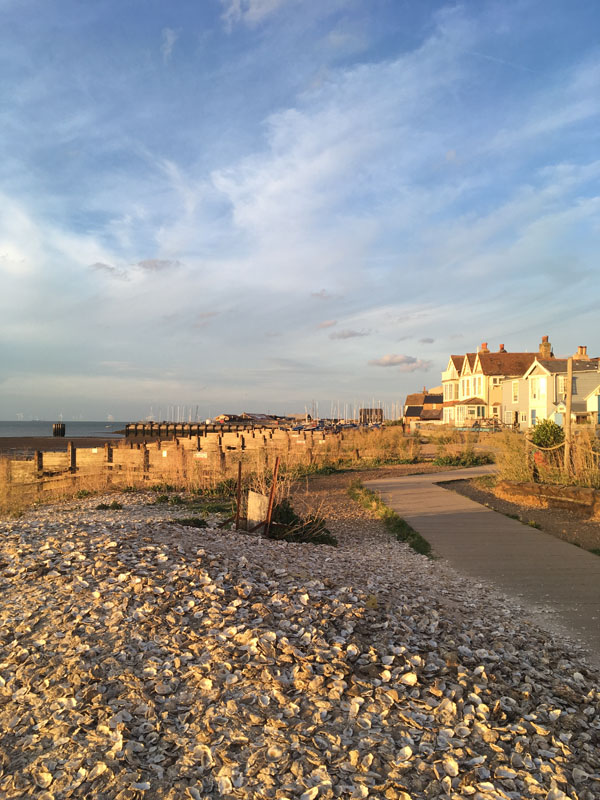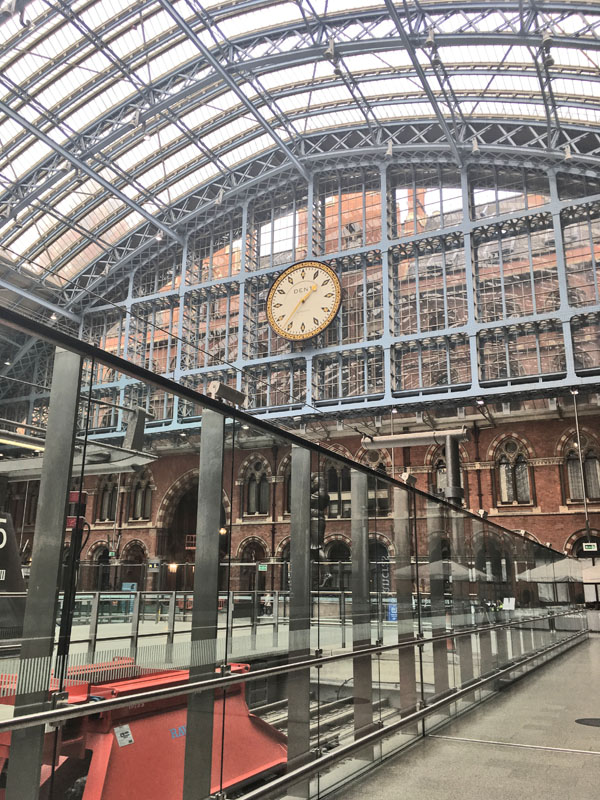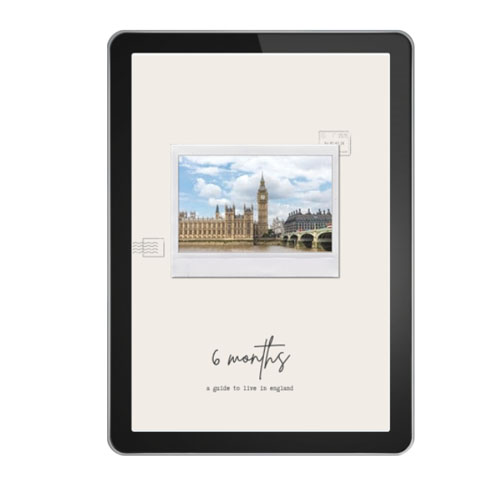These train travel tips in England will give you the best chance at scoring a seat and a deal!
Although as of late 2022 and early 2023 train strikes in England have left all but the most intrepid and determined traveler stranded. Do check before you plan a visit.
When traveling in England, why not take advantage of the extensive national network of trains or buses instead of renting a car. You’d be surprised at how far you can go. There are over 2,500 stations in England and many are located within or in city or town centers.
If you’re basing your stay in London, don’t even think about renting a car. Not. Worth. It.
Since moving to England, I’ve learned to use public transportation by relying on the national network of trains, buses and the London tube. At first I found it very confusing but with practice I’ve learned the tricks and you can too.
Train travel in England isn’t known for its reliability and being prepared may make the difference between catching your train or getting stranded!
Live in England for 6 Months Guide
Use this national rail map to understand local and national train routes. London is the hub of the network and most long distance routes will originate and terminate in London.
If you need to travel from one London rail station to another you can transfer by underground/tube (subway) or by taxi. I advise avoiding peak rush hours if you have a lot of luggage. Consider using a taxi to transfer between rail stations such as London Paddington to St. Pancras instead.
What You Need to Know: Train Travel Tips

Beautiful St Pancras station in London
Buying Train Tickets
- Use the Trainline app to search, book and pay for tickets ahead of time. You’ll pay a small booking fee but I find it’s worth having all my tickets on one app. You can also use it to research a journey while en route and get updates on schedule disruptions and delays.
- The cheapest fare is a Super Off Peak then fares get progressively more expensive.
- Off Peak fares are next cheapest. Let’s say you book an 11:00 AM Off Peak ticket from London Victoria station to Brighton with a day return (round trip) at 5:00 PM. You could also travel at any other Off Peak fare time such as 11:30 or 12:00. Same goes for your return journey.
- Any Time Day Single fares are the most expensive. Can be used any time of day making them the most flexible fare type if you’re unsure of your schedule. On popular commuter routes, expect these higher fares at morning and evening rush hour.
- If you miss a train or it’s cancelled, you can travel on any other train showing the same type of fare.
- Train tickets should be released up to 12 weeks in advance. 6-12 weeks in advance is your best shot at good price ticket.
Using Train Tickets
- Your ticket can be downloaded and stored in your phone as a Mobile ticket. Or if you choose, collect a paper ticket at the station ticket machine using the credit card and ticket collection number used to buy your ticket.
- Rail guards come through the train and ask for tickets after each stop or right after you get on. You won’t need to show it again until your journey comes to an end unless you make a change.
- If your destination station has a turnstile you’ll pop your ticket in or scan it, the gate will open and your ticket gets left behind. A lot of smaller stations don’t have turnstiles so you just walk out. Yes it’s the honor system.
- If you get on a train without a ticket, you may have to pay a penalty plus the full ticket price.
- You won’t need to present your ticket when changing trains or platforms, unless you leave the station.

Whitstable is about an hour east of London by train out of Victoria Station.
Avoiding Train Disruption & Cancellations
- Rail replacement buses – try to avoid. Engineering works, signal failures and jumpers can wreak havoc on train schedules especially those originating in London. If your train has been canceled they may substitute with rail replacement buses to get you to your destination. If you see a bus icon when booking your train journey on Trainline, avoid these routes if possible.
- Weekends and holidays experience the most disruptions to train travel. Schedules get disrupted by cancelled trains and scheduled maintenance. Avoid Sunday travel if possible.
- If your train is cancelled, check the Trainline app for alternatives. My train from Gatwick to Reading was canceled and I didn’t find out until I was on my train. I did a quick search to see if I could connect to my destination via the next stop which was Clapham Junction. Instead of getting off at Gatwick for my connection, I stayed on the train, then got off at Clapham Junction and made my new connection.
- If your train’s cancelled or you have to take a different train, don’t stress. If your ticket isn’t the correct fare type you may have to pay to upgrade it but it’s unlikely.
- Get to a larger station if possible. I’d booked a westward train to Brighton which was cancelled after I got on. Instead of going to Brighton, the train was terminating halfway. The rail guard told us to get off at this stop (which was a small unmanned station) and wait for a connecting bus or train. I checked to make sure I could get a train to Brighton from Southampton, so I got off there, three stations before the train was to terminate. Southampton is a big station with lots of connecting trains. I walked 20 steps to the next train to Brighton to wait in comfort instead of standing on a cold wet unmanned station with no facilities like the folks who had stayed on my original train.
- This year the rail service has been striking off and on during the summer. Keep an eye on the news for strike dates and avoid traveling during these periods if possible. The Trainline app will also update you to strikes or delays.

St. Erth station on the way to St. Ives in Cornwall
Train Timetables & Destinations
- Usually the train’s onboard screen has accurate location or destination information. Some conductors are great about updating these, others don’t. If it looks like you’re heading to a completely different location, always ask.
- I’ve gotten on the wrong train before. It came in to the platform at the right time but I didn’t pay attention to what regional service it was. The destination should be on the front of the train. When I realized my mistake I got off at the next station and watched the train I should have caught whizz by without stopping. Fortunately I was able to make another connection to get home.
- There’s always another train or route. Ask a train employee (they’re usually in uniform or wearing a high vis vest) and consult your Trainline app.
- Check the station timetable screens for train arrivals and departures. If you’re catching an 11:06 train, that arrival/departure will show up on the screen. Look for a train leaving at 11:06 and then see what platform it’s leaving from. The large stations like London Victoria or Clapham Junction will have 19 or 17 platforms. Most smaller stations will have less than 4, some have 1 for both directions!
- Be aware of the final destination of your train to check the arrivals board. For example, I may be going to Bath but the train’s final destination is Cardiff Central. Look for the Cardiff Central train, not a train to Bath.
Ready to make a move?: Move Abroad Checklist
Train Travel Tips & Amenities
- Some longer haul routes like London Paddington to Penzance have reserved seats and a bar or lunch car OR “trolley service” of drinks and snacks. You can also reserve a quiet car if you want to work or snooze – do this when you book your ticket.
- Don’t expect charging plugs or points on all trains. GWR (Great Western Rail) has plug outlets and USB charging ports at most seats.
- Large train stations will have food services to grab a snack. Marks & Spencers (M&S) Simply Food have delicious snacks and drinks including beer, wine and juices. Pret a Manger is another favorite for good quality fresh food to go.
- Use Google Maps to research what each train station has to offer, from food to toilets to newsstands. Some stations charge for access to toilets. Victoria and Waterloo don’t charge and neither does Brighton. Have some coins just in case. Most regional and national trains have toilet facilities.
- Most stations have lifts or elevators if you have large bags and need to traverse from one platform to another on the other side of the train tracks.
St Pancras Rail Station upper level
English trains are the personification of the country’s quirky, sometimes maddeningly inefficient personality. When they work, it’s sheer heaven to sit back and watch the glorious countryside roll by and there’s no better way to immerse yourself in British culture and local flavor.
If you’ve driven a car all your life, it can feel frustrating to have so little control over getting where you want to go. But perhaps it’s a good lesson to let go, let someone else drive for a change and embrace the unexpected!
You’re probably thinking this is a LOT to remember, but hopefully you’ll learn as you go.
For in depth details on how to get into and around central London from Heathrow and Gatwick airport. Happy travels!





